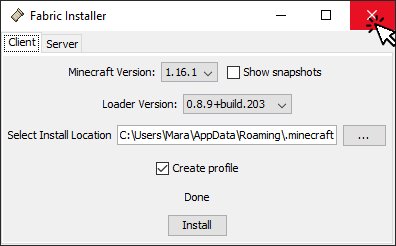
Jumploader allows Fabric mods to work on the launcher but also don't allow Forge mods to work in the profile/modpack. Jumploader was a more simplified and definitive way to allow Fabric mods to work on the CurseForge launcher more naturally and modpack exporting way for Fabric modpack creators to create and post modpacks to CurseForge without any limitations to the user experience. While this method isn't as beneficial in features as Jumploader, this methods allows for running snapshot versions without the need of the Forge modloader as part of the profile, while Jumploader requires Forge and is possible to run on snapshots, it can be difficult to get working when using a release version below and trying to force a snapshot above on the CurseForge launcher. Another downside to the this method is with the version profile requiring manual selection every time the user closes the launcher.Īs the Fabric loader versions copied over in this method are not a proper checked, automatically installed/registered version installation like the Forge ones are, it's just another version that appears in the list, while still useable in the launcher, the user has to keep reselecting the version because the loader version is not properly registered/recognised by the launcher like the Forge ones are.

This method does not allow modpacks to be exported, but allows for regular launching and playing the game in a Fabric environment in the launcher. mixin.out folders, along with the Fabric Loader version from the Mojang launcher Fabric installation to be carried over to Twitch (before the feature was removed) and CurseForge Launchers. Vanilla To Twitch/Curseforge (Recommended For Snapshots)īefore Jumploader, there was only an unofficial method known as the "Vanilla to Twitch" method (discovered by Suntanned Duck2/Niche Duck) that specifically required files from the.

Showing 1.16.4 Forge profile (top left), Fabric mods and JEI (right) and Fabric mods in-game (bottom left).


 0 kommentar(er)
0 kommentar(er)
